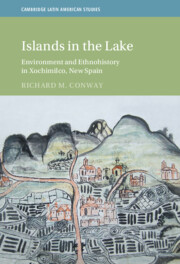Book contents
- Islands in the Lake
- Cambridge Latin American Studies
- Islands in the Lake
- Copyright page
- Dedication
- Contents
- Illustrations
- Preface
- Acknowledgments
- Introduction
- 1 Ecological and Political Landscapes
- 2 Land
- 3 Canoes and Commerce
- 4 Demography and Society
- 5 Crisis in the Seventeenth Century
- 6 Late Colonial Watersheds
- 7 Nahuatl Sources from Xochimilco
- Conclusion
- Glossary
- Bibliography
- Index
- Other Books in the Series (continued from page ii)
7 - Nahuatl Sources from Xochimilco
Published online by Cambridge University Press: 01 October 2021
- Islands in the Lake
- Cambridge Latin American Studies
- Islands in the Lake
- Copyright page
- Dedication
- Contents
- Illustrations
- Preface
- Acknowledgments
- Introduction
- 1 Ecological and Political Landscapes
- 2 Land
- 3 Canoes and Commerce
- 4 Demography and Society
- 5 Crisis in the Seventeenth Century
- 6 Late Colonial Watersheds
- 7 Nahuatl Sources from Xochimilco
- Conclusion
- Glossary
- Bibliography
- Index
- Other Books in the Series (continued from page ii)
Summary
The book concludes by examining striking cultural continuities as expressed in language. The final chapter reveals how Nahuatl documentary traditions retained much of their vitality and importance. The sources themselves underwent changes, in orthography and content, that amounted to departures from earlier forms of written expression. These changes reflected the autonomous local traditions of documentary production in Native communities. At the same time, though, the sources also exhibited a remarkable degree of resilience and stability in its vocabulary and grammatical structures. Surprisingly the sources exhibited few of the common signs of Hispanic influence in which Native speakers could now be expected to incorporate not only Spanish nouns as loanwords in Nahuatl but also verbs, particles, and other grammatical elements. All of these innovations remained conspicuously absent from Xochimilco’s Nahuatl records. Xochimilco thus remained a predominantly Nahua place at the end of the colonial period, in terms of demographic orientation, even as it also successfully preserved many aspects of its rich cultural heritage.
- Type
- Chapter
- Information
- Islands in the LakeEnvironment and Ethnohistory in Xochimilco, New Spain, pp. 310 - 343Publisher: Cambridge University PressPrint publication year: 2021

